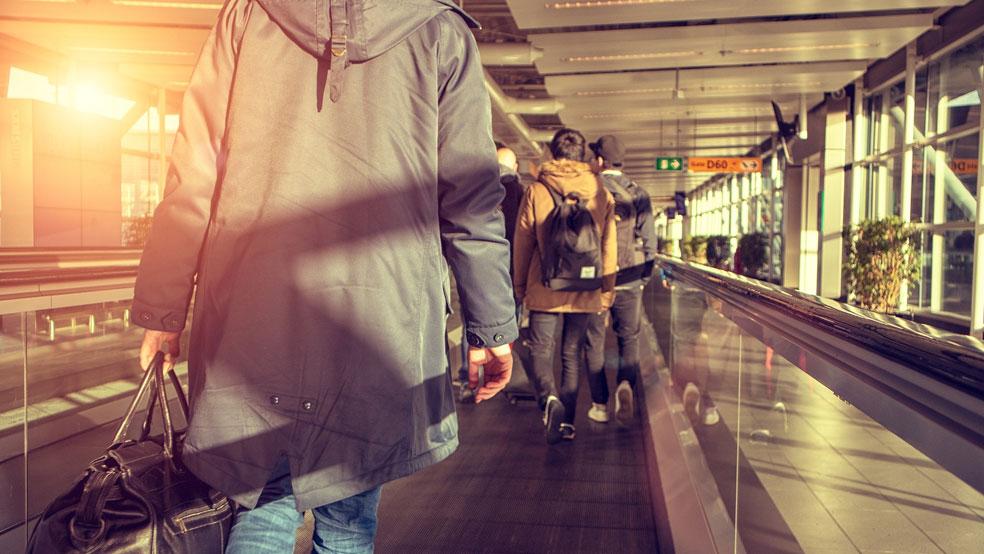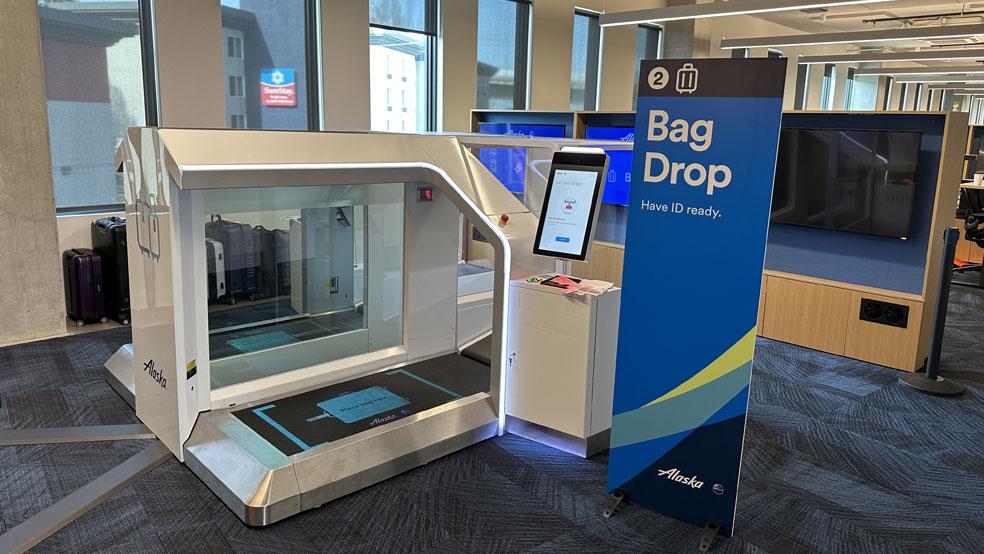
Introduction
As passengers, we are all aware that when flying to your destination, there are several steps one must complete for a smooth passenger experience. A critical procedure prior to boarding is baggage check-in. To make this quick and stress-free, many airports across the world are deploying self-service bag drops, thus eliminating lines, and giving passengers better control of their journey.
According to IATA’s 2022 Global Passenger Survey (GSP), 80% of passengers stated they would more likely check a bag if they could monitor it throughout the journey, with 50% expressing interest in using an electronic bag tag.
In the following blog, we explore how self-service bag drop solutions are breaking through at airports, the benefits they have seen in passenger experience and operational efficiency, along with a more streamlined check-in process.
More automation equals less stress
With mobile check-in saving passengers effort, there’s no doubt that travellers prefer checking in remotely or via a kiosk to leverage technology in order to provide a seamless experience. The passenger bag drop allows airports and airlines with resources to be shared and scaled as required. Operational efficiency is achieved, as one agent can manage multiple bag drop units and improve customer satisfaction.
Embross’ own VelocityBagDrop (VBD), for example, empowers airports and airlines with a highly flexible solution, while enabling passengers to seamlessly check-in luggage in as few as 10 seconds. This results in more terminal capacity and embraces fresh technological approaches for better security, safety, and efficiency.
Using the self-bag drop – a seamless experience
Today, the baggage check-in process is habitually the first step for travellers entering an airport. The self-service process allows passengers to check their bags without interacting with airline/airport staff and offers a simple and efficient process:
Facial detection/recognition
1) First, the passenger approaches the self-bag drop when the system detects their face, captures their photo and sends to a biometric day of travel gallery (e.g. Traveller Verification Service (TVS), airline/airport proprietary, 3rd party.
2) Second, day of travel gallery returns Passenger Name. If a person is already enrolled, Passenger Name Record (PNR) is sent simultaneously to the airline to retrieve reservation and baggage allowance.
3) Optional alternate flows are used and vary by carrier; e.g. the system can automatically print allocated bag tags at the bag drop, payment can be collected for oversized/overweight bags, and/or failover to 1:1 local ID check against a government ID.
Once the above steps are completed, the baggage will automatically be transported to the sorting area and then onto the airplane.
One-step versus two-step bag drop – what is the difference?
As the name suggests, a one-step bag drop allows passengers to check-in for their reservation, indicate how many bags are being checked, print their bag tags, pay any applicable fees, and drop off their bags in one simple step [1]. It’s a streamlined process that has made the check-in process a breeze for travelers across the globe. Conversely, with a two-step bag drop, the passenger would normally check-in at a Customer User Self Service (CUSS) machine as before but goes into a separate station to drop their baggage to the baggage handling system. A crucial point is that there are more CUSS machines for passenger input than areas for baggage input.
Flexibility and efficiency
There are multiple reasons why self bag drops are becoming increasingly prevalent in airports across the globe. Let’s start with speed. Chances are you have waited a long time in what seems to be a never-ending queue just to check your luggage. With self-service bag drops, queues are drastically reduced with faster passenger processing and measured in seconds. This results in improved space utilization (for airports) while having a positive impact across the line, through security and right to the gate.
Another major reason is that self-service bag drops lead to enhanced efficiencies with airline staffing. By doing so, this frees airport staff to perform other duties.
Third, with close to three-quarters of airports investing in some form of biometrics, the results have been nothing short of astounding. With facial recognition playing a pivotal role in many airport journeys, we are starting to see multi-biometric validation. For example, Embross’ VBD is available with facial biometrics, replacing previously used iris and/or fingerprint biometric modalities and can identify and validate passengers against centralized databases. Furthermore, the VBD is designed with identity management in mind and by integrating biometrics at each bag drop point, both airports and airlines can speed up the check in process.
Furthermore, ancillary purchases offer passengers more convenience during their travel. By paying for ancillary services (i.e., excess baggage), passengers do not have to line up at another airline desk. Instead, passengers can purchase directly while at the bag drop through a range of payment interface options. Embross has enabled its multi-merchant, chip and pin payment capability for CUSS Bag Drop deployments requiring EMV/Chip/Pin baggage payment across multiple carriers. Many carriers have opted to instead leverage mobile payments through a QR scan to the airline’s web/app payment.
Self bag drop deployments around the world
Many airports/airlines have already deployed self bag drop solutions from Embross, including Las Vegas Airport, Delta Airlines, and Manohar International Airport in Goa, India.
Additionally, bag drops are part of a much bigger biometric agenda for many airports. For example, Abu Dhabi Airport in the United Arab Emirates (UAE) is another prime example which is only a handful of airports in the world that offers a CBP (Customs and Border Protection) facility for US travellers. Recently, Embross entered a contract with Next50 for the integration of its advanced biometric solution into its self-service baggage touchpoint at Abu Dhabi Airport. The project is in preparation for the 45 million passengers it is projecting in the next decade. This integration will revolutionize the way passengers interact with the baggage handling process, offering a more efficient and convenient experience.
Therefore, as can be seen, the trend to introduce self-service touchpoints during the next step of the passenger journey is well underway. Self bag drop solutions are quickly helping to create a more efficient and comfortable passenger experience while perfectly fitting to the project needs of various airports and airlines.
Looking to the future
With so much emphasis on the airport/travel experience, passengers continue to seek reassurance when travelling, and self bag drop systems are no exception. So, the next time you are travelling and check your own bags at a self bag drop, you might notice some level of detail which was not clear before. These details or developments are just the beginning of how technology will provide more flexibility, convenience, and autonomy for passengers. After all, the future of travel depends on these developments.
Embross offers border agencies, government authorities and airports a complete portfolio of solutions that help secure, automate, and facilitate border and passenger management. If you would like to learn more, please contact a member of our expert team: info@embross.com

References:

